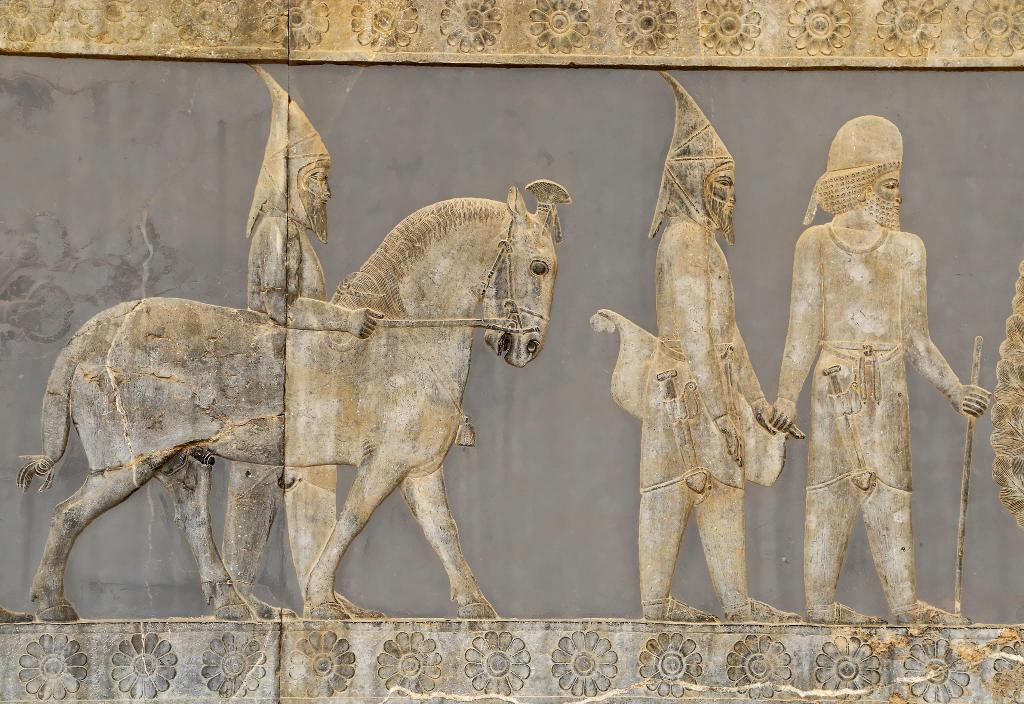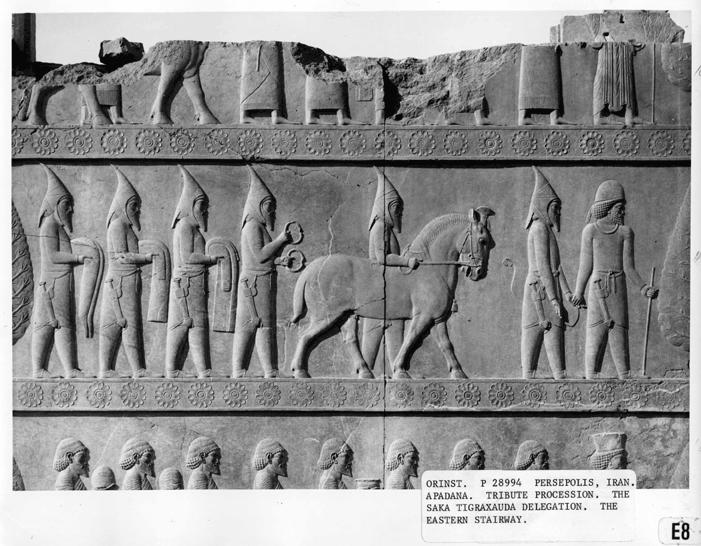
Amazon Audible Gift Memberships
Scythian Warriors Giving Tribute on a Relief at Persepolis, after 526BC



Images of Scythians can be found on monumental architecture, including this relief from a wall in the Apadana, or audience hall, of the Persian ruler Darius I at the site of Persepolis in modern Iran.
Source: Archaeology


|
ORINST. P 28994 PERSEPOLIS, IRAN. APADANA. TRIBUTE PROCESSION. THE SAKA TIGRAXAUDA DELEGATION. THE EASTERN STAIRWAY. E8 University of Chicago - photo gallery |
The construction of Persipolis was started in 516BC by Darius I at Stakhr-i-Parsa, to take the place of Cyrus's old Capital of Pasargadae. The building of the city continued through three reigns, being completed in 465BC. While Susa remained the administrative capital, it was Persepolis, the ceremonial capital, which epitomised the grandeur of the greatest empire the world had seen, stretching from the Caspian Sea to the Nile, from India to the Aegean.
Ceremonial life in the palace revolved round the two great audience halls. The apadana is where the king received his dignitaries and the annual tributes of his subject peoples, and where he gives an annual banquet for the people of Persia and Media.
It was reached by flights of steps with friezes depicting tribute-bearers: Medes, Susians, Armenians, Babylonians, Egyptians, Scythians, Indians, Libyans, Ethiopians and Ionians. The outer great hall was known as the Hall of 100 Columns and was used for receiving the peoples of the Empire.
Source: p119, Chronicle of the World by Jerome Burne (Editor).